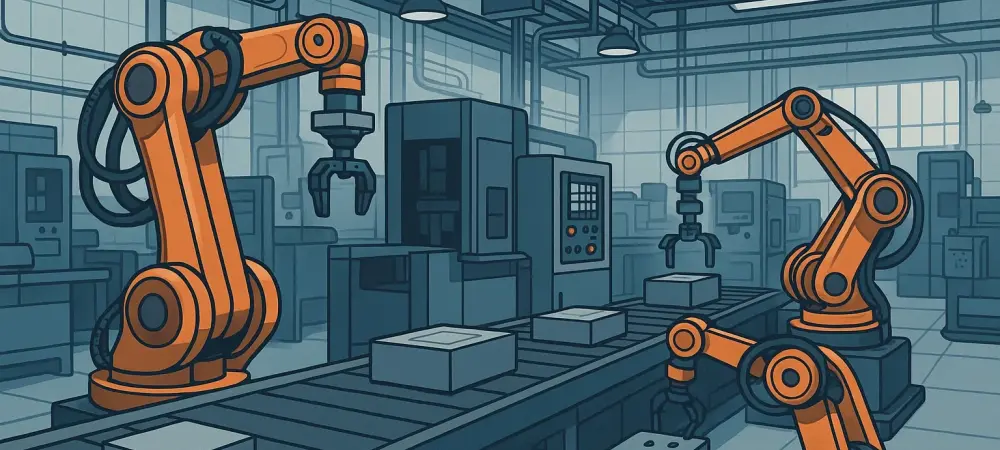Amidst the landscape of contemporary industry, the embrace of Agile Manufacturing Automation is reshaping production paradigms with a focus on adaptability and efficiency. Departing from traditional methods, this trend signifies a shift toward a production model characterized by flexibility and just-in-time delivery. As global markets confront ever-evolving demands, the ability to rapidly adapt manufacturing processes has emerged as a critical factor for maintaining competitiveness. This article delves into the current dynamics of Agile Manufacturing Automation, evaluating its implications for industries globally and illuminating potential pathways for its evolution.
Current Landscape of Agile Manufacturing
Data and Adoption Trends
Driven by mounting demands for faster production cycles, Agile Manufacturing Automation has witnessed significant adoption strides across industries. Recent reports highlight an impressive growth trajectory, with investment in automation technologies climbing steadily. Companies are recognizing the potential of this trend to bolster operational efficiency by leveraging flexible, robot-enabled production systems. Economic forecasts predict sustainable growth in adoption rates, bolstered by the imperative to increase agility in manufacturing processes.
Underlying this adoption spree is an array of compelling drivers. The need to meet varying customer preferences promptly, coupled with the pressure to optimize resource utilization, has propelled Agile Manufacturing into the limelight. Companies strive to eliminate the inefficiencies embedded in static production operations, turning instead to automation that enables seamless adaptability. This drive is accelerated by technological advancements that continually enhance manufacturing capabilities, setting the stage for a robust future for Agile Manufacturing.
Real-World Applications and Case Studies
The tangible impact of Agile Manufacturing Automation is already apparent in the operations of leading manufacturing entities. Industries such as automotive and aerospace have become pioneers in adopting this trend, utilizing automated systems to expedite production processes. Case studies reveal striking results, with companies achieving substantial reductions in production timelines and costs. These examples underscore a paradigm shift: manufacturing is transitioning to an agile, responsive framework, reducing waste and enhancing output quality.
Noteworthy innovations have emerged as a result of this trend’s deployment, such as more efficient assembly lines that allow for customizable products. Firms that have embraced Agile Manufacturing Automation report not only improved production metrics but also increased customer satisfaction due to heightened responsiveness to demands. This transformation is echoed in various sectors, reaffirming the role of agile models as a linchpin in modernizing manufacturing strategies.
Expert Insights on Agile Manufacturing
Industry leaders and experts unanimously advocate for Agile Manufacturing as a cornerstone of future industrial strategy. They emphasize its capacity to significantly enhance productivity by minimizing downtime and aligning production with real-time market needs. Opinions converge on the notion that agile frameworks confer the dual benefits of efficiency and competitiveness, key assets for manufacturers endeavoring to outmaneuver rivals in a dynamic marketplace.
However, the transition to agile models is not without challenges. Experts caution against potential obstacles, including the steep initial investment costs and the intricacies of system integration. Nonetheless, the long-term gains—improved agility and sustained market relevance—are consistently highlighted as compelling incentives. Expert panels recommend a gradual yet decisive shift towards Agile Manufacturing to secure a formidable market position.
Future Prospects of Agile Manufacturing Automation
Looking ahead, the trajectory of Agile Manufacturing Automation presents a horizon rich with possibilities. Anticipations are rife with predictions of more advanced, autonomous systems that can self-optimize and enhance production efficacy. Innovations in sensor technology and data analytics are expected to drive this evolution by enabling even greater customization and precision in manufacturing.
Industries at the forefront of this shift may experience profound transformations, marked by increased scalability and a reshaping of traditional supply chain models. Equally compelling are the challenges that remain, with widespread adoption hinging on overcoming barriers such as investment reluctance and integration complexity. Manufacturers are urged to tackle these hurdles proactively, ensuring the rapid assimilation of agile methodologies across sectors.
Conclusion
Reflecting on the advancements represented by Agile Manufacturing Automation, the increasing significance of flexibility and responsiveness stands out in contemporary industry. This trend symbolizes a pivotal evolution, ushering in a new era of efficient, customer-centric production processes. For industries poised to capitalize on this opportunity, a deliberate integration strategy coupled with forward-thinking innovation will be essential. As the momentum for agile solutions continues, the manufacturing world stands on the precipice of a transformation characterized by sustainability, resilience, and unparalleled adaptability.

